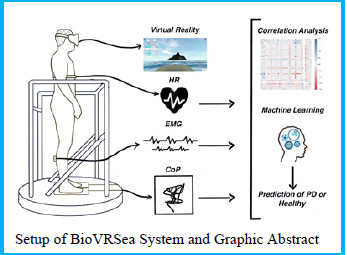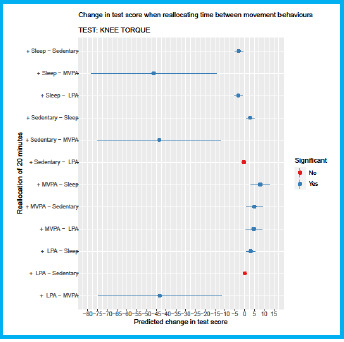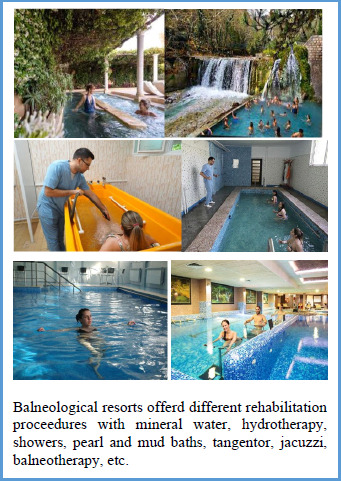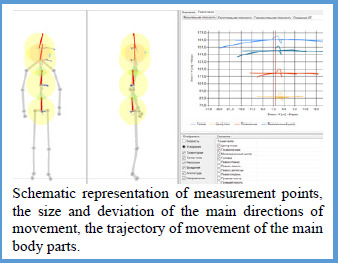Abstract
The 2023 Padua Days of Muscle and Mobility Medicine (Pdm3) were held from March 29th to April 1st, 2023. Most of the abstracts were published electronically in the European Journal of Translational Myology (EJTM) 33(1) 2023. Here we report the complete book of abstracts that confirms the interest of more than 150 scientists and clinicians from Austria, Bulgaria, Canada, Denmark, France, Georgia, Germany, Iceland, Ireland, Italy, Mongolia, Norway, Russia, Slovakia, Slovenia, Spain, Switzerland, The Netherlands and USA to gather to the Hotel Petrarca of Thermae of Euganean Hills, Padua, Italy for contributing and attending the Pdm3 (https://www.youtube.com/watch?v=zC02D4uPWRg). The 2023 Pdm3 started March 29th in the historic Aula Guariento of thePadua Galilean Academy of Letters, Arts and Sciences with the Lecture of Prof. Carlo Reggiani and ended in the late afternoon with the Lecture of Professor Terje Lømo after introductory words of Professor Stefano Schiaffino. The program followed in the Hotel Petrarca Conferenece Halls from March 30 to April 1, 2023. The extended topic interests of specialists in basic myology sciences and clinicians, collected under the umbrella neologism of Mobility Medicine, is stressed also by expansion of Sections of the EJTM Editorial Board (https://www.pagepressjournals.org/index.php/bam/board). We hope that Speakers of the 2023 Pdm3 and readers of EJTM will submit “EJTM Communications” to the European Journal of Translational Myology (PAGEpress, Pavia, Italy) by May 31, 2023 and/or invited review and original articles for the 2023 special issue: "Pdm3" of Diagnostics, MDPI, Basel, Switzerland due September 30, 2023.
Key Words: Padua Days of Muscle and Mobility Medicine (Pdm3), European Journal of Translational Myology and Mobility Medicine, PAGEpress, Pavia, Italy
Ethical Publication Statement
We confirm that we have read the Journal’s position on issues involved in ethical publication and that this report is consistent with those guidelines.
The Padua Muscle Days (PMDs), i.e., meetings on biology, physiology, pathology, physical medicine and rehabilitation of skeletal muscle in health and diseases started in 1985 to provide advice on Translational Myology. Year after year interests broadened to complementary disciplines and neologisms were introduced. Finally, from 2021 the Conference was renamed Padua Days on Muscle and Mobility Medicine (Pdm3). The program of the 2023 Pdm3 was confirmed in autumn 2022 with Scientific Sessions to occur over four full days at either the Guariento Hall of the Padua Galilean Academy of Arts, Letters and Sciences (March 29, 2023) and at the Conference Halls of the Hotel Petrarca, Thermae of Euganean Hills (Padua), Italy.
For a short promo of the 2023 Pdm3 link to: https://www.youtube.com/watch?v=zC02D4uPWRg Collected during autumn and winter 2022 and 2023, titles and abstracts of more than 90 oral presentations were listed in evolving preliminary schedules.1,2
Here we add a few more last-minute abstracts, bringing the final Program to about 120 Presentations.
The four days of 2023 Pdm3 included senior and junior speakers (basic myologists and clinicians) from Austria, Bulgaria, Canada, Denmark, France, Georgia, Germany, Iceland, Ireland, Italy, Mongolia, Norway, Russia, Slovakia, Slovenia, Spain, Switzerland, The Netherlands and USA.
The Final Program and Book of Abstracts are here published in electronic format in the issue 33(2) 2023 of the European Journal of Translational Myology (EJTM).
The heterogeneity of specialists, gathered under the umbrella neologism of Mobility Medicine, is underlined by the new Sections of the 2023 Editorial Board of EJTM (www.pagepressjournals.org/index.php/bam/board).
Some blank abstracts appear in the Book of 105 abstracts with only authors' names and affiliations, due to the request of Authors not to disclose their unpublished results. This is a pity, but at the same time it is very strong evidence of the actuality and originality of the 2023 Pdm3 Program. At least 140 attendees (more than half were young basic scientists and clinicians) gathered in the rinascimental frescos-rich Aula Guariento of the Padua Galilean Academy of Arts, Letters and Sciences and in the Conference Halls of the Hotel Petrarca Thermae of Euganean Hills (Padua) to get a preview of original results of the best world laboratories performing translational research on muscle and mobility medicine. The 2023 Pdm3 started in the morning of March 29th with the Lecture of Prof. Carlo Reggiani of the University of Padua, (Italy). After introduction of Professor Stefano Schiaffino of the University of Padua (Italy), the Lecture of Professor Terje Lømo of the University of Oslo (Norway) closed the program of the first day.
In the following days that we spent in the Conference Hall of Hotel Petrarca, the following program lists the Lectures of: H. Lee Sweeney of the University of Florida, Gainesville, FL (USA), Jonathan Jarvis of the Liverpool John Moores University (UK), Paolo Gargiulo of the University of Rejkyavik (Iceland), Feliciano Protasi of the University of Chieti (Italy), Helmut Kern, LBI Rehabilitation Research, Vienna (Austria), and long- or short-Oral presentations of more than 100 Speakers.
The novelties of the 2023 Pdm3 were two Practical Courses: the one on the Functional analysis of the stomatognathic system, organized by Claudia Dellavia and Riccardo Rosati of the University of Milan (Italy) and the Practical Activities on European Medical Thermalism organized by Ugo Carraro of the University of Padua (Italy) during a working lunch at the Medical Hotel Ermitage in Teolo, Euganean Hills (Padua), Italy). Both events were appreciated by dozens of participants.
We thank those organizers that were able to attract excellent young, senior and old speakers, specifically: Elisabeth R. Barton, Ines Bersch, Paolo Gargiulo, Elena P. Ivanova, Christiaan Leeuwenburgh, Marco V. Narici, Riccardo Rosati, Piera Smeriglio, Carla Stecco, Daniela Tavian and H. Lee Sweeney.
Following Table lists the best Organizer, Conferences (tied), Sessions (tied), Speaker and Young Speakers (tied).
The Best of the 2023 Pdm3
Organizer: Ugo Carraro
Lecturers (equal in merit): Helmuth Kern; Carlo Reggiani
Sessions (equal in merit): Senescence & Rejuvenation; FES managements of acquired muscle diseases
Speaker: Nathan K. LeBrasseur
Young Speakers (equal in merit): Agnese De Mario, Maria Chiara Maccarone, Maira Rossi and Ester Tommasini
In conclusion, the 2023 Pdm3 was even more interesting than the successful events of the last years.3-10
Acknowledgments
The authors thank Organizers, Chairs, Speakers, and Attendees of the Pdm3.
List of acronyms
- EJTM
European Journal of Translational Myology
- MDPI
Molecular Diversity Preservation International
- Pdm3
Padua Days on Muscle and Mobility Medicine
- PMD
Padua Muscle Days
Funding Statement
Funding: The 2023 Pdm3 are supported by the University of Florida Myology Institute and Wellstone Center, Gainesville, FL, USA (H. Lee Sweeney, Gainesville, FL, USA) and by Physiko- & Rheuma-therapie, Institute for Physical Medicine and Rehabilitation, St. Pölten, Austria, Centre of Active Ageing - Competence Centre for Health, Prevention and Active Ageing, St. Pölten, Austria and Ludwig Boltzmann Institute for Rehabilitation Research, St. Pölten, Austria (Helmut Kern, Wien, Austria).
Contributor Information
Ines Bersch, Email: ines.bersch@paraplegie.ch.
Helmut Kern, Email: info@active-ageing.eu.
Nejc Sarabon, Email: nejc.sarabon@fvz.upr.si.
Riccardo Rosati, Email: riccardo@riccardorosati.eu.
Nathan K. LeBrasseur, Email: LeBrasseur.Nathan@mayo.edu.
Christiaan Leeuwenburgh, Email: cleeuwen@ufl.edu.
Ugo Carraro, Email: ugo.carraro@unipd.it.
References
- 1.Zampieri S, Narici MV, Gargiulo P, Carraro U. Abstracts of the 2023 Padua Days of Muscle and Mobility Medicine (2023Pdm3) to be held March 29 - April 1 at the Galileian Academy of Padua and at the Petrarca Hotel, Thermae of Euganean Hills, Padua, Italy. Eur J Transl Myol. 2023. Feb 10. doi: 10.4081/ejtm.2023.11247. Epub ahead of print. PMID: 36786151. [DOI] [PMC free article] [PubMed] [Google Scholar]
- 2.Zampieri S, Stecco C, Narici M, Masiero S, Carraro U. 2023. On-site Padua Days on Muscle and Mobiliy Medicine: Call for speakers. Eur J Transl Myol. 2022. Dec 13. doi: 10.4081/ejtm.2022.11071. Online ahead of print. PMID: 36511885 Free article. [DOI] [PMC free article] [PubMed] [Google Scholar]
- 3.Carraro U, Bittmann F, Ivanova E, Jónsson H Jr, Kern H, Leeuwenburgh C, Mayr W, Scalabrin M, Schaefer L, Smeriglio P, Zampieri S. Post-meeting report of the 2022 On-site Padua Days on Muscle and Mobility Medicine, March 30 - April 3, 2022, Padua, Italy. Eur J Transl Myol. 2022. Apr 13;32(2):10521. doi: 10.4081/ejtm.2022.10521. PMID: 35421919; PMCID: PMC9295170. [DOI] [PMC free article] [PubMed] [Google Scholar]
- 4.Sweeney HL, Masiero S, Carraro U. The 2022 On-site Padua Days on Muscle and Mobility Medicine hosts the University of Florida Institute of Myology and the Wellstone Center, March 30 - April 3, 2022 at the University of Padua and Thermae of Euganean Hills, Padua, Italy: The collection of abstracts. Eur J Transl Myol. 2022. Mar 10;32(1):10440. doi: 10.4081/ejtm.2022.10440. PMID: 35272451; PMCID: PMC8992680. [DOI] [PMC free article] [PubMed] [Google Scholar]
- 5.Carraro U, Yablonka-Reuveni Z. Translational research on Myology and Mobility Medicine: 2021 semi-virtual PDM3 from Thermae of Euganean Hills, May 26-29, 2021. Eur J Transl Myol. 2021. Mar 18;31(1):9743. doi: 10.4081/ejtm.2021.9743. PMID: 33733717; PMCID: PMC8056169. [DOI] [PMC free article] [PubMed] [Google Scholar]
- 6.Carraro U. Thirty years of translational research in Mobility Medicine: Collection of abstracts of the 2020 Padua Muscle Days. Eur J Transl Myol. 2020. Apr 1;30(1):8826. doi: 10.4081/ejtm.2019.8826. PMID: 32499887; PMCID: PMC7254447 [DOI] [PMC free article] [PubMed] [Google Scholar]
- 7.Carraro U. 2019. Spring PaduaMuscleDays: Translational Myology and Mobility Medicine. Eur J Transl Myol. 2019. Feb 21;29(1):8105. doi: 10.4081/ejtm.2019.8105. PMID: 31019665; PMCID: PMC6460213 [DOI] [PMC free article] [PubMed] [Google Scholar]
- 8.Carraro U. Exciting perspectives for Translational Myology in the Abstracts of the 2018Spring PaduaMuscleDays: Giovanni Salviati Memorial - Chapter I - Foreword. Eur J Transl Myol. 2018. Feb 20;28(1):7363. doi: 10.4081/ejtm.2018.7363. PMID: 29686822; PMCID: PMC5895991. [DOI] [PMC free article] [PubMed] [Google Scholar]
- 9.Carraro U. 2017. Spring PaduaMuscleDays, roots and byproducts. Eur J Transl Myol. 2017. Jun 27;27(2):6810. doi: 10.4081/ejtm.2017.6810. PMID: 28713538; PMCID: PMC5505085. [DOI] [PMC free article] [PubMed] [Google Scholar]

































































